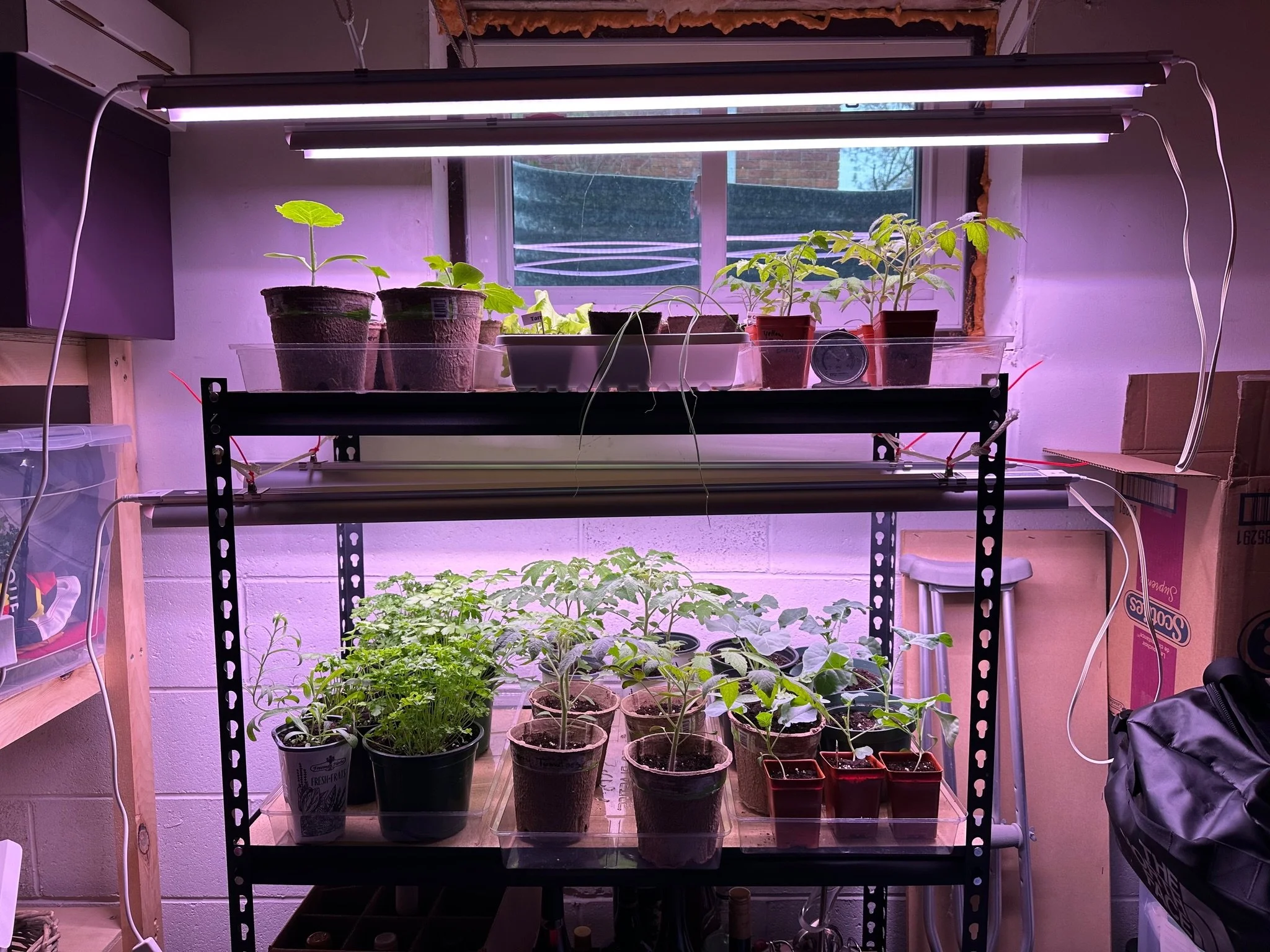Provide Light
Most seeds need plenty of light to germinate. Place them in a sunny spot or use grow lights to provide 12-16 hours of light per day.
A south-facing window is a great place to start your seeds. However, if your winters are long and dark, consider purchasing grow lights, as even a south-facing window might not provide enough sunlight during winter.
Grow lights can also speed up germination; seeds that typically germinate in 5-7 days can sprout in just 3 days with grow lights.
Keep in mind that while seeds start small, they eventually grow into larger seedlings. A small south-facing windowsill may be adequate initially, but you might run out of space as the seedlings grow. In that case, investing in grow lights becomes essential. For instance, fast-growing plants like melons, squash, cucumbers, and some tomato species need ample light to thrive. Starting strong only to have your plants suffer from insufficient light can be disheartening.
Here are a few additional tips from us on providing the right light for your seedlings:
Type of Grow Lights: Opt for full-spectrum LED grow lights. These lights closely replicate natural sunlight and deliver the essential wavelengths needed for optimal plant growth. They're energy-efficient, have a long lifespan, and emit less heat compared to other grow light types.
Proper Grow Light Positioning: Place your grow lights 2-4 inches above the seedlings. As the plants grow, continue adjusting the height to maintain this distance. If the lights are too far away, seedlings may stretch and become leggy; if they are too close, the leaves may burn. Bendable clip-on lights are a fantastic beginner option as they can be easily adjusted in height as your seedlings grow and moved around if you need more space.
Expanding Your Grow Space: If you're planning to grow more plants, take your available space into account and consider investing in overhanging lights. We have lights suspended by strings, which can be moved up and down depending on the plant's growth. Another great option is an adjustable shelf system, allowing you to lower the shelf distance to the light as the plants grow.
Light Duration: While 12-16 hours of light per day is a good general guideline, some plants may require longer or shorter durations. Monitor your seedlings and adjust the light duration based on their response. A timer can help automate the light schedule and ensure consistency, but make sure you monitor your light levels - see point below!
Reflective Surfaces: Use reflective materials like aluminum foil, mylar, or whiteboards around your seedlings to maximize light distribution. Reflective surfaces help bounce light back onto the plants, ensuring even growth and reducing the risk of uneven or spindly seedlings. White basement walls are fantastic too.
Monitoring Light Levels: If you grow your plants at home you can easy monitor if your lights work or not by checking on them and looking at your plants responses. Some lights come with a timer, but they don’t always work great, especially if you invest in cheaper options. We monitor our seedlings with remote cameras for this reason just to make sure the lights turn off and on at the right time. Additionally you could invest in a light meter to measure the intensity of light your plants are receiving, if you are unsure with the plants responses. This can help you fine-tune the positioning and duration of your grow lights, ensuring optimal light conditions for your seedlings.
Supplementing Natural Light: If you have a south-facing window that receives good sunlight but it's still not enough, you can supplement it with grow lights. This way, your seedlings get the benefits of natural sunlight along with the additional light they need to thrive, especially when your seedlings get bigger and they start competing for the sunlight.
Preventing Overheating: Ensure good ventilation around your grow lights to prevent overheating. Excessive heat can stress the plants and reduce growth rates. Using a small fan can help maintain air circulation and keep the temperature in check. See Provide Airflow for more options.
Choosing the Right Spectrum: For vegetative growth, blue light (in the range of 400-500 nm) is essential, while red light (in the range of 600-700 nm) is crucial for flowering and fruiting. Full-spectrum grow lights cover these ranges, but if you are more experienced you can also customize your setup with specific lights for different growth stages.



